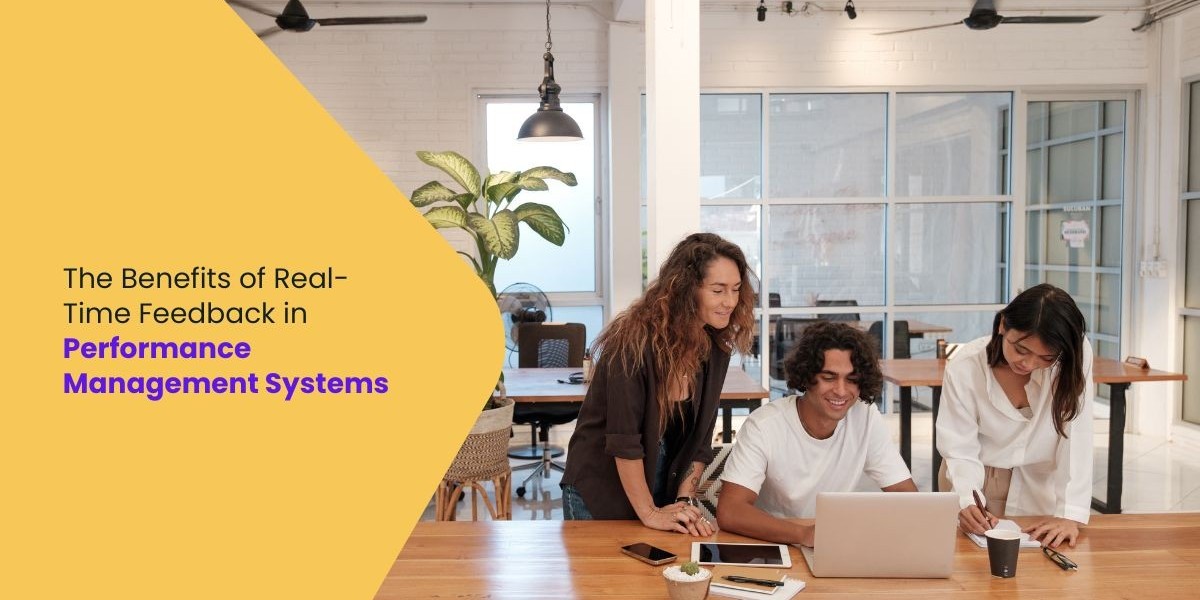In today’s fast-paced and dynamic business environment, traditional annual performance reviews are rapidly becoming outdated. Instead, organizations are shifting towards real-time feedback within their performance management system. This approach involves providing employees with immediate, continuous feedback on their performance, rather than waiting for periodic reviews. Real-time feedback offers numerous benefits, from enhancing employee engagement and productivity to fostering a culture of continuous improvement and agility.
Enhancing Employee Engagement
One of the most significant benefits of real-time feedback is its positive impact on employee engagement. Continuous feedback helps employees understand how their work contributes to the organization’s goals, providing a sense of purpose and direction. When employees receive timely recognition for their efforts, they feel valued and motivated to maintain or improve their performance. This regular interaction also helps build stronger relationships between employees and managers, further boosting engagement levels.
Improving Productivity and Performance
Real-time feedback directly influences productivity by allowing employees to make immediate adjustments to their work. Instead of waiting for annual reviews to learn about areas needing improvement, employees receive constructive feedback as soon as issues arise. This timely intervention helps prevent small problems from escalating and allows employees to correct their course promptly. Moreover, continuous feedback can highlight and reinforce positive behaviors, encouraging employees to replicate successful practices and achieve better results.
Fostering a Culture of Continuous Improvement
A performance management system that incorporates real-time feedback fosters a culture of continuous improvement. Employees become accustomed to receiving and acting on feedback regularly, which cultivates a mindset of constant growth and development. This culture encourages employees to seek out feedback proactively and view it as an opportunity for learning rather than criticism. As a result, the organization benefits from a more agile and adaptable workforce that is always striving to enhance their skills and performance.
Enhancing Communication and Transparency
Real-time feedback enhances communication and transparency within an organization. It opens up regular channels of dialogue between employees and managers, making performance discussions a routine part of the work environment. This frequent interaction helps build trust and ensures that employees are always aware of where they stand. Transparency in feedback processes also demystifies performance expectations, making them clear and understandable for everyone in the organization. Top HR companies in India have integrated real-time feedback mechanisms into their performance management systems, setting a benchmark for effective communication and transparency in the workplace.
Supporting Employee Development
Continuous feedback is crucial for effective employee development. It helps identify skill gaps and training needs in real-time, allowing organizations to provide targeted development opportunities. Employees receive guidance on how to improve their performance and develop their careers, which can lead to higher job satisfaction and retention rates. Furthermore, regular feedback sessions can be used to set short-term goals and track progress, making employee development a continuous and measurable process.
Reducing Stress and Anxiety
Annual performance reviews can be a source of significant stress and anxiety for employees. The anticipation of a once-a-year evaluation can create pressure and uncertainty. In contrast, real-time feedback reduces this stress by providing ongoing, incremental feedback. Employees are not left wondering about their performance for extended periods, as they receive continuous updates and can address any concerns immediately. This regular communication helps create a more relaxed and supportive work environment.
Aligning Individual and Organizational Goals
Real-time feedback ensures that individual goals remain aligned with organizational objectives. Managers can regularly update employees on changing priorities and expectations, ensuring that everyone is working towards the same targets. This alignment helps improve overall organizational performance, as employees are continuously guided and adjusted to meet the evolving needs of the business.
Conclusion
Incorporating real-time feedback into performance management systems offers a multitude of benefits that can significantly enhance both individual and organizational performance. By promoting employee engagement, improving productivity, fostering a culture of continuous improvement, enhancing communication, supporting development, reducing stress, and aligning goals, real-time feedback transforms the traditional approach to performance management. Performance management system in India with real-time feedback can help businesses stay agile and responsive to rapid market changes. Organizations that embrace this modern approach are better equipped to adapt to changes, nurture their talent, and achieve sustained success in today’s competitive business landscape.








